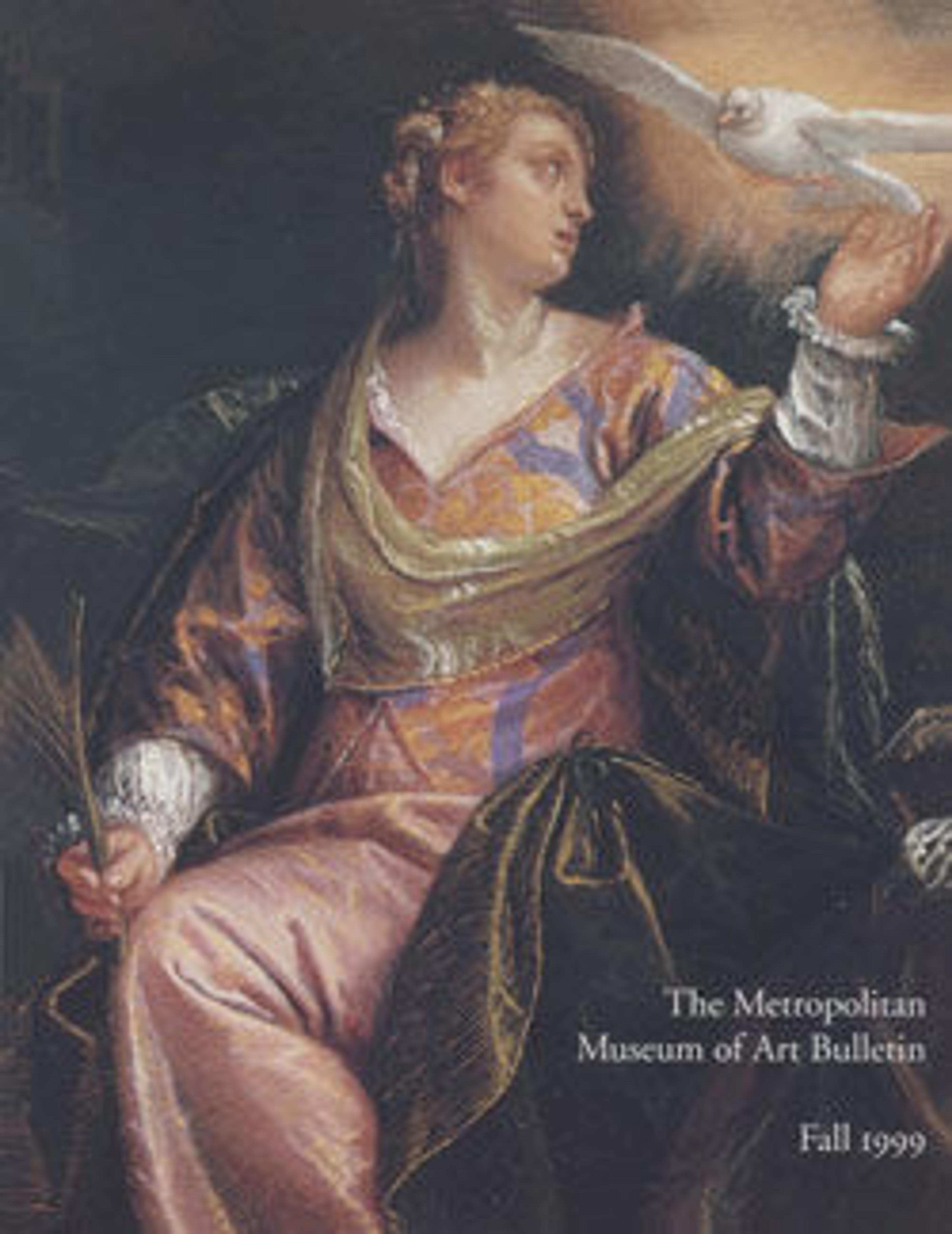Section from a Frieze with a Seated Buddha and Attendants
The Buddha was portrayed in human form for the first time during the Kushan period. The central image of this frieze, an element from a lost ensemble, shows him in a typical pose and format for the period, seated with attendants at his side holding fly whisks. They are flanked on the right by the Bodhisattva Maitreya, standing on a plinth holding a water bottle, and on the left by a crowned figure who may be the Bodhisattva Avalokiteshvara. These two bodhisattvas are also traditional attendants of the Buddha. Further to the right stand a group of men, women, and a child paying homage to a seated figure, who can be provisionally identified by the double vajra (thunderbolt scepter) in his right hand as the Bodhisattva Vajrapani, a deity also frequently associated with the Buddha. Another possibility is that this seated figure is the god Indra, who similarly attends the Buddha. The scene on the other side of the relief is more difficult to decode. Groups of worshippers, two holding fly whisks, flank a tree (?) and a large head emerging from the ground, both of which may refer to yakshas (earth spirits). The gesturing child at the center is also an enigma.
Artwork Details
- Title:Section from a Frieze with a Seated Buddha and Attendants
- Date:Modern
- Culture:India
- Medium:Red sandstone
- Dimensions:H. 3 in. (7.6 cm); W. 7 15/16 in. (20.2 cm); L. 31 9/16 in. (80.2 cm)
- Classification:Sculpture
- Credit Line:Gift of Jeffrey B. Soref, in honor of Martin Lerner, 1998
- Object Number:1998.488.2
- Curatorial Department: Asian Art
More Artwork
Research Resources
The Met provides unparalleled resources for research and welcomes an international community of students and scholars. The Met's Open Access API is where creators and researchers can connect to the The Met collection. Open Access data and public domain images are available for unrestricted commercial and noncommercial use without permission or fee.
To request images under copyright and other restrictions, please use this Image Request form.
Feedback
We continue to research and examine historical and cultural context for objects in The Met collection. If you have comments or questions about this object record, please contact us using the form below. The Museum looks forward to receiving your comments.
